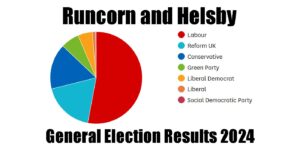The UK general election is expected on May 6 2010, where around 45 million eligible voters will place a single X against the political party/candidate they want to represent them for up to 5 years. With our current first past the post electoral vote system only the candidate with the most votes in each of […]
Continue Reading UK Electoral Reform – Alternative Vote System













It is clear that party motivated politics is not representing the general population.It has been sugested that the idea of a trully proportional system would at least create a more representative parliment.Not just for the top two or even three main partys but for all partys standing for election.This would mean having BNP members in parliment but also green party members as well.
A Party polling 10% of the national vote should be represented by 10% of the members of parliment.I believe that this system would not only be fairer but would also be the begining of a huge number of new partys representing more diverse groups.This would give the voter a more varied and diverse choice at the polling booths.
I think this diversity would renew parliment with the possibility of becoming a true talking shop that understands the people it represents.
A system based on that this time would look like this>
234 con
189 lab
150 lib
20 ukip
12 bnp
11 snp
7 green
4 dup
4 plaid cymru
4 sinn fein
3 sdlp
So we have a really balanced lot. The minority parties would have a say but not be able to control the main contenders. Parties like SNP could only vote on things that affect their devolved government. Abolish the whip system and those who contract to be a member of a particular party may be dismissed by their own party. Lists decided at what is at the moment constituency level. Priority decided by party members. Perhaps one house should be elected in this way and the other by FPTP.
Aren’t elections fun! Well this time anyway.
If we get the preferred PR system of the Lib Dems which is the single transferable vote with a cut off of around 10% of the vote share in a constituency to be considered for a seat (considered, not actually getting a seat), the above numbers would never happen.
Only 3 BNP candidates gained 10% of the vote share on May 6th, those three might be considered for a seat, but they’d still have to gain enough 2nd and 3rd… votes to secure a seat (hard to achieve for a small unpopular party).
What’s most likely to happen is a three way split between the big three parties with Labour and Conservatives having most of the seats and the Lib Dems a close third. Smaller parties would gain the odd seat, so you might see 1 or 2 BNP MPs, 1 or 2 Green MPs etc…
This assumes the popular share of the vote would remain roughly the same.
Basically proportional representation does not share the seats based on the countrywide % of the popular vote. It’s more complex and each area elects X number of MPs. Rather than having 650 constituencies we might have 65 large constituencies with each electing 10 MPs.
The votes would be counted for each of the 65 constituencies and depending on the form of PR used would determine what it would take to gain one of the 10 seats.
The important point is under most forms of PR we won’t see dozens of fringe extremist MPs from parties like the BNP. We might get 1 or 2 unless there’s a massive shift in the vote share to those parties.
Two weeks ago I didn’t understand how PR worked and was concerned at the media reports that if the BNP have 5% (they currently have under 4% IF they had 650 candidates in each election) of the popular vote they automatically gain 5% of the MPs (that’s 30+ MPs)!!!
Apparently most in the media either don’t understand proportional representation or they are scaremongering to make news since at worst we’d have a few BNP MPs.
David
It might help if someone could explain exactly how AV works. I can’t quite work out why people need to rank more than their first and second preferences. As I understand it, the candidates are initially ranked according to who gets the most ‘first choice’ votes. If no candidate gets more than 50% of first choice votes, the candidate with the fewest votes is eliminated and the ‘second choice’ votes of those who voted for him/her are added to the first choice votes. If still no candidate has more than 50%, another candidate is eliminated. I can’t see how at any stage anyone needs to take into account anyone’s 3rd or 4th or 5th etc preferences so why complicate matters by allowing them to be inserted on the ballot paper? Surely ‘alternative’ implies just a choice of two, as does the concept of having only a single transferable vote?
The AV system is used in Australia and does not lead to the extremist parties some fear. Also, I don’t know why the Tories oppose it – it is rather like the way they elect their leader. In round one, everyone votes for their first choice, then the candidates with the fewest votes are eliminated and so on, so those who voted for an eliminated candidate switch to their second choice – the AV system does the same but in one ballot. If it’s good enough for MPs electing a Tory leader, why isn’t it good enough for the rest of us to elect a local representative as MP??).
In answer: imagine a standard Lab / Tory two-way fight seat. But you are a Green. So they go 1 on your list. 2 for you is Lib Dem – you hate both the main parties. If you only listed 1 and 2, your vote would still be wasted in all probability. But using all the separate numbers means you could vote SWP for 3, Independent for 4, Lab for 5. So you would be continuing to vote AGAINST Tory until the last possible stage. If your 1-2-3-4 all get eliminated your vote will STILL prevent the Tory you don’t want getting the seat. Had you just had options 1 and 2, this would not have happened – your vote would have disappeared.
Hi Michael
I see what you are saying, but I’m still unclear as to how all the different rankings of every voter are brought together to decide the winner. In your example, if the Green and Lib Dem candidates didn’t get very many ‘first’ votes, and they were eliminated, then your other preferences would be ignored. I am not clear under what circumstances anyone would look at your 3rd place preference, or 4th, or 5th etc. Also, in some constituencies there might be more than a dozen candidates, some very obscure – are voters to be expected to rank them all in order of preference?
Silly idea. I just say tha you keep parliament the same, and convert the House of Lords into a representative upper house where number of seats directly represents the percentage of vote received. That way the party that won the most constituency seats would have the most MPs, but not necessarily control the upper house. It’s all about checks and balances.
Hi Marc
The problem with that is that the House of Lords would then theoretically be far more ‘democratic’ than the Commons – which begs awkward questions of which House really has primacy.
Simple.
Divide the population into constituencies of 300,000
precisely. Each political party can nominate up to 3 candidates to stand. The people vote once for one
only. First 3 past the post get elected in.
The fairest voting system in the world.
It ain’t gonna happen though.
Amazing, & Brilliant!
I have had this idea in my head for some time, I am glad to see that someone else has articulated it.
This takes care of both reform problems in one fell swoop:
1. It reflects true proportionality in votes cast (as opposed to the pseudo-PR systems currently being discussed) whilst still allowing for decisive governments to continue being formed from the Commons.
2. It completes Lords reform elegantly (although a small number of seats could still be appointed for the sake of tradition, or concentrating expertise, or to execute some of the un-separated powers that might still reside in the Lords).
Go Marc!
This system, which we call Preferential voting, works here in Australia and usually means that the winning party receives more than 50% of the Two Party Preferred Vote across the whole country or state. If the electoral commission has done the job of adjusting electoral boundaries fairly, that is. Occasionally, one party will win with around 48% of the 2PP vote as happened in South Australia this year but that sort of outcome is nothing in comparison with the unfairness of your system in the UK where a party can win with 36% of the vote.
The advantage of preferential voting is that you know that the winning candidate is always acceptable to more that 50% of the voters in a single electorate and the winning party is usually acceptable to more than 50% of all the voters across the country.
It certainly does not favour extremist parties.
The Conservatives may worry that all of the preferences from the Liberal democrats would transfer to the Labour Party. In practice this will not happen. Probably only 60% of the vote would transfer to Labour. 40% would go the Conservatives. The vote for independents and other parties would go where the voter stipulated. Chances are that in the current election where Labour is on the nose the Conservatives would have won a significant victory using this system. Non-Labour voters are likely to preference Labour.
Based on the experience in Australia this system is far more favourable to the conservative parties than the Single Transferable vote or Hare-Clarke system which is employed in Tasmania and the ACT. In those jurisdictions it favours the Labor Party and the Greens.
The AV system has worked extremely well for many years and many elections throughout Australia, where it is known as Preferential Voting – a term that describes, better than AV, its method and intention.
It ensures that people voting for minority parties do not have their ballots wasted. It also provides for tactical voting – for individual seats in Australia, parties hand out leaflets advising the voter how to number his paper to vote tactically in line with his party’s preference.
For each seat, it results in the election of the candidate that the voters, as an overall group, dislike least – surely an attitude that meets current mood of voters in the UK – and it is a good method for getting rid of a sitting member if that were the wish of a majority of voters in this electorate.
In Australia, where voting is compulsory, everyone who votes must use Preferential Voting (or the Alternative Vote, if you will), and you don’t find Australians saying it is too hard to understand or to use. If Australians can number their papers to indicate their preference among the candidates named on the ballot papers, surely this will not be beyond people here in the UK.
Simple problem with this system: It is based on the assumption that if there are 6 candidates, the strength of your preference for these candidates decreases (or increases) in a straight line.
Because this is often not true in reality (consider the strength of anti-Tory feeling on parts of this website for example :-), perverse conclusions about who is really liked or disliked the least are possible. There are also other vagaries around what happens if a few candidates are of roughly equal, but slightly different, preference. I would like to go into detail, but will only model an example if required (some illustrative cases exist on the web already).
For the true relative intensity of preference to be ascertained, I suggest that each voter is given a number, say, 100 points. They can allocate any number to a candidate, so long as the total adds up to 100 (this can be mediated by a simple computer at the booth, so voters test their proposed numerical allocations, get them validated on-screen, then print off their ballot).
This can then be aggregated, and either the first past the compiled post wins (on the true non-tactical preference of each voter in each constituency), or any other number of leading preferential candidates selected.
Such a system renders tactical voting truly meaningless. (I regard people who preach tactical voting as being morally equivalent to people who encourage tax evasion.)
If you can’t allocate 100 points across 6 candidates, then… Labour’s “Education-Education-Education” policies have clearly not worked? ! :-)
I am pleased to see that the Australian-style Alternative Vote system is being discussed for reform in the UK. From my research, that is by far the “least worst” system. No need to look to Europe–look to Australia, which has used the system successfully for nearly a century.
The AV system preserves the single-member constituency to which you in Britain and we in America are accustomed, yet avoids the absurdity of electing a candidate with as little as 30% of the total vote.
The AV system is far from radical. If anything, empirical studies show it tends to produce moderate or compromise candidates and parties.
In fact, the system generally leads to the same result as in the FPTP system, because there is a tendency for the second and third preferences to mirror the proportion preferences counted in the first round–meaning that the candidate leading in the first round of counting generally tends to win at the end of the day even under the AV system. The exception is where two or more ideologically-similar candidates split the vote. That’s the beauty of the system. It really only comes into play when it is needed–the keep the minority for dominating the majority.
UK need not look as far as Australia for examples of workable electoral reform. Both the Irish Republic and N Ireland keep constituencies but with multiple members using the Single Transferable Vote (STV). Both Wales and Scotland use a variant of the Mixed Member Proportional system which mixes single member constituencies with a ‘top up’ of list MPs to make the party representation more proportional. This sytem was originally divised by the US, UK and France for post-war W. Germany and adopted by New Zealand in 1993. All of the UK are used to the list system used for MEPs – so the people of the UK should have a referendum with these choices so that they – and not the politicians – can choose. If no system has a majority, then a runoff referendum would occur.
Now for something completely different! Reduce the number of constituencies to 500 and the winner in each is the elected MP. Allocate a further 100 seats in parliament in exact proportion to the nationwide percentage of the vote, to be selected by the respective parties but ONLY from those candidates that finished second in their own ballot. Not perfect but has the following positives: a fairer balance to the overall result, less “wasted” votes, simplicity.
Re: Steve Tasker – so you’ll have a 100 MP’s that do not represent a constituency sitting in Parliament????